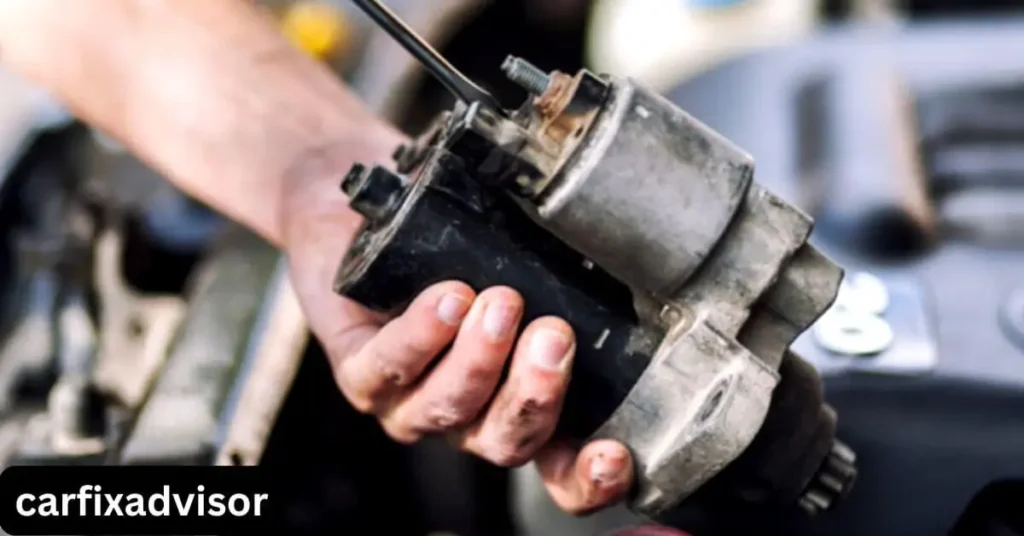If you’ve ever found that certain electrical components in your car, such as lights, windows, or the radio, aren’t working properly, you may have encountered an issue related to the fuse system. One of the most common issues that arise is “no power to fuse in car.” This situation can leave you wondering why the fuse isn’t receiving power and how to address the problem.
In this article, we’ll dive into what it means when there is no power to the fuse in your car, common causes, and the steps you can take to resolve the issue. Whether you’re a seasoned mechanic or a car owner trying to troubleshoot, this guide will help you understand and fix this electrical problem.
What Is a Fuse in a Car?
A fuse is a small but crucial component in your car’s electrical system. It serves as a protective device, designed to prevent your car’s circuits from overloading and potentially causing damage to electrical components. The fuse works by “blowing” or breaking the circuit when there is an electrical overload or short circuit, which stops the flow of electricity.
Functions of Fuses in Cars:
-
Protects Electrical Components: Fuses prevent damage to components such as the headlights, windshield wipers, or air conditioning by limiting excessive current flow.
-
Prevents Fires: In the event of an electrical malfunction, fuses help reduce the risk of a fire by interrupting the current.
-
Restores Safety: When a fuse blows, it acts as a sign that something is wrong, giving you a chance to fix the issue before further damage occurs.
What Does “No Power to Fuse” Mean?
When you encounter the “no power to fuse” problem, it means that the fuse is not receiving the electrical power it is supposed to. This is typically an indication of a deeper issue within your car’s electrical system. A fuse cannot perform its job if there is no power flowing to it in the first place.
Several reasons can cause the fuse to lack power, and it’s important to pinpoint the root cause in order to resolve the issue. The problem might involve the fuse box itself, the wiring, or the component associated with the fuse.
Common Causes of No Power to Fuse in Car
-
Blown Fuse: This might seem obvious, but sometimes the fuse itself might be blown and needs replacing.
-
Faulty Wiring: Damaged or disconnected wires can prevent power from reaching the fuse.
-
Bad Fuse Box Connection: Loose connections in the fuse box can cause power to fail to reach the fuse.
-
Corrosion or Dirt: Accumulation of dirt or corrosion in the fuse box or on the terminals can obstruct electrical flow.
-
Faulty Relay or Fuse Box Issue: The relay or fuse box may have a problem that prevents power from being properly distributed.
-
Battery or Alternator Problems: If the car’s battery or alternator is faulty, the entire electrical system, including the fuses, may not receive the necessary power.
How to Troubleshoot and Fix No Power to Fuse in Your Car
If you’re facing a situation where there’s no power to the fuse in your car, follow these troubleshooting steps to identify and resolve the issue.
Step 1: Inspect the Fuse Itself
The first thing you should do when you encounter this problem is check the fuse. Use the following steps to inspect the fuse:
-
Turn off the Car: Always turn off the car before you start working on any electrical components.
-
Locate the Fuse Box: Most cars have fuse boxes located under the dashboard or in the engine compartment. Refer to your owner’s manual to locate the exact location.
-
Remove the Fuse: Carefully remove the fuse that is associated with the component not working.
-
Check for a Blown Fuse: Inspect the fuse. If the metal strip inside the fuse is broken or discolored, it’s blown and needs to be replaced.
Step 2: Check for Power at the Fuse
To check if the fuse is receiving power, you’ll need a multimeter. Here’s how to do it:
-
Set the Multimeter to DC Voltage: Set your multimeter to measure DC voltage.
-
Check Voltage Across Fuse Terminals: Place one probe of the multimeter on the terminal of the fuse that should receive power, and the other probe on a ground point (a metal surface on the car body).
-
Check for Power: If the multimeter shows that there is no power at the fuse, the problem is likely with the wiring or a component upstream from the fuse.
Step 3: Inspect the Wiring
If the fuse is not receiving power, the issue may lie with the wiring. Here’s how to check:
-
Look for Visible Damage: Inspect the wiring connected to the fuse. Look for any fraying, cuts, or signs of wear.
-
Check for Loose or Disconnected Wires: Ensure that all connections are secure and that no wires are disconnected.
-
Test the Circuit: If you’re familiar with how to use a circuit tester, check the continuity of the wiring to ensure that the current can flow properly.
Step 4: Inspect the Fuse Box
Sometimes, the fuse box itself can be the cause of the issue. Here’s what to check:
-
Loose or Corroded Connections: Check for any loose or corroded terminals inside the fuse box.
-
Clean the Fuse Box: If you see corrosion or dirt, use a contact cleaner or a soft brush to clean the terminals and connectors inside the fuse box.
-
Check for Bad Relay: If your car uses relays to control power to certain fuses, check the relays for any signs of failure. A bad relay can prevent power from reaching the fuse.
Step 5: Test the Battery and Alternator
If the fuse and wiring seem to be in good condition, the problem may lie with the car’s battery or alternator. Here’s how to check:
-
Check Battery Voltage: Use a multimeter to check the voltage of the battery. A healthy battery should show around 12.6 volts when the car is off.
-
Check the Alternator: If your car’s battery is fine but electrical issues persist, the alternator might not be charging the battery properly. You can test the alternator by checking the voltage at the battery while the car is running. It should read between 13.5 and 14.5 volts.
 No Power to Fuse in Car
No Power to Fuse in Car
Preventing Power Issues to Fuses in Your Car
Now that you’ve identified and potentially resolved the issue of no power to the fuse, it’s important to consider how to prevent these problems from recurring. Preventative maintenance and regular checks of your vehicle’s electrical system can go a long way in ensuring that your car remains in good working order. Below are some essential tips for maintaining a healthy electrical system in your car.
1. Regular Fuse Inspections
-
Check Fuses Periodically: Over time, fuses can wear down or blow. It’s good practice to inspect your vehicle’s fuses every 6-12 months as part of your regular maintenance schedule.
-
Replace Fuses Promptly: If a fuse has blown, replace it immediately. Driving with a blown fuse can damage other electrical components, which may lead to more expensive repairs.
2. Maintain Battery Health
-
Clean Battery Terminals: Corrosion on the battery terminals can prevent your car from getting the proper power it needs, leading to issues with the electrical system. Regularly clean the battery terminals to ensure they remain free of corrosion.
-
Check Battery Voltage: Make it a habit to check the voltage of your car battery, especially if you notice electrical problems. A healthy car battery should maintain about 12.6 volts when the engine is off and about 13.5-14.5 volts when the engine is running.
-
Replace the Battery: If your car battery is old (more than 3-5 years), replace it before it fails. A weak battery can cause intermittent electrical issues.
3. Clean the Fuse Box
-
Inspect and Clean Fuse Box Terminals: Dust, dirt, or corrosion in the fuse box can block proper power flow to fuses. Keep the fuse box clean and ensure the terminals are free of any debris.
-
Use a Contact Cleaner: If corrosion or dirt is present, use a contact cleaner designed for electrical components to clean the connections. Be careful to avoid getting the cleaner on other parts of the car.
4. Monitor the Wiring System
-
Inspect Wiring Regularly: Over time, the wiring in your car can degrade due to heat, moisture, or physical wear. Make it a habit to inspect the main wiring harness for any visible damage.
-
Check for Loose or Frayed Wires: If you notice any wires that are frayed or loose, they should be replaced immediately. Damaged wires can create short circuits, which may damage the fuse or other electrical components.
5. Avoid Overloading the Electrical System
-
Be Mindful of Aftermarket Additions: Adding aftermarket devices like additional lights, stereos, or electronic gadgets can put extra strain on your car’s electrical system. Ensure that any added components are installed correctly and don’t exceed the recommended electrical load.
-
Limit the Use of High-Powered Accessories: Avoid using high-powered accessories, such as portable air compressors or heavy-duty chargers, while the car is idling. These accessories can draw too much power and overload the fuse system.
 No Power to Fuse in Car
No Power to Fuse in Car
When to Seek Professional Help
Although many of the issues related to “no power to fuse in car” can be resolved with some DIY troubleshooting, there are times when professional intervention is required. If you’ve gone through all the steps and the issue persists, it might be time to consult an expert.
Signs You Should Contact a Professional:
-
Persistent Fuse Problems: If fuses continue to blow, or you are unable to identify the source of the issue, a mechanic can perform a more in-depth diagnostic to pinpoint underlying issues, such as faulty wiring, relay problems, or a malfunctioning fuse box.
-
Unusual Electrical Behavior: If you notice abnormal behavior in other electrical components—such as dimming headlights, unresponsive power windows, or malfunctioning dashboard lights—it’s best to have a professional assess the entire electrical system.
-
Complicated Fuse Box Issues: If the fuse box itself is damaged or if there are signs of major electrical issues (such as burnt or melted fuses), a professional should handle the repairs. Incorrect handling of fuse box components can lead to further electrical damage.
Why Professional Help is Important
Professional mechanics or electricians are trained to handle complex electrical issues in cars. They have specialized tools and knowledge to diagnose the problem quickly and accurately. Furthermore, they can help prevent any accidental damage that might arise from improper handling
Conclusion: No Power to Fuse in Car
If you’ve encountered the “no power to fuse in car” issue, it’s important not to panic. While it may seem complicated, most of the time, the problem can be traced back to simple issues like a blown fuse, faulty wiring, or a weak battery. By following the steps outlined in this guide, you can diagnose and fix the problem efficiently, saving you time and money.
Remember, the fuse system is there to protect your car’s electrical components, and while problems can arise, they’re usually manageable with the right approach. Regularly inspecting your fuse box, maintaining your car’s battery, and being mindful of your car’s electrical load are all key ways to avoid future issues.
If after troubleshooting, the issue persists, or if you’re not comfortable handling electrical components yourself, don’t hesitate to reach out to a trusted mechanic. A professional can quickly diagnose and repair any deeper issues, ensuring your vehicle’s electrical system runs smoothly.
Stay proactive with your vehicle’s maintenance, and you’ll be able to keep everything running without interruption. Here’s to a reliable, well-maintained car that gets you where you need to go—safely and efficiently!
